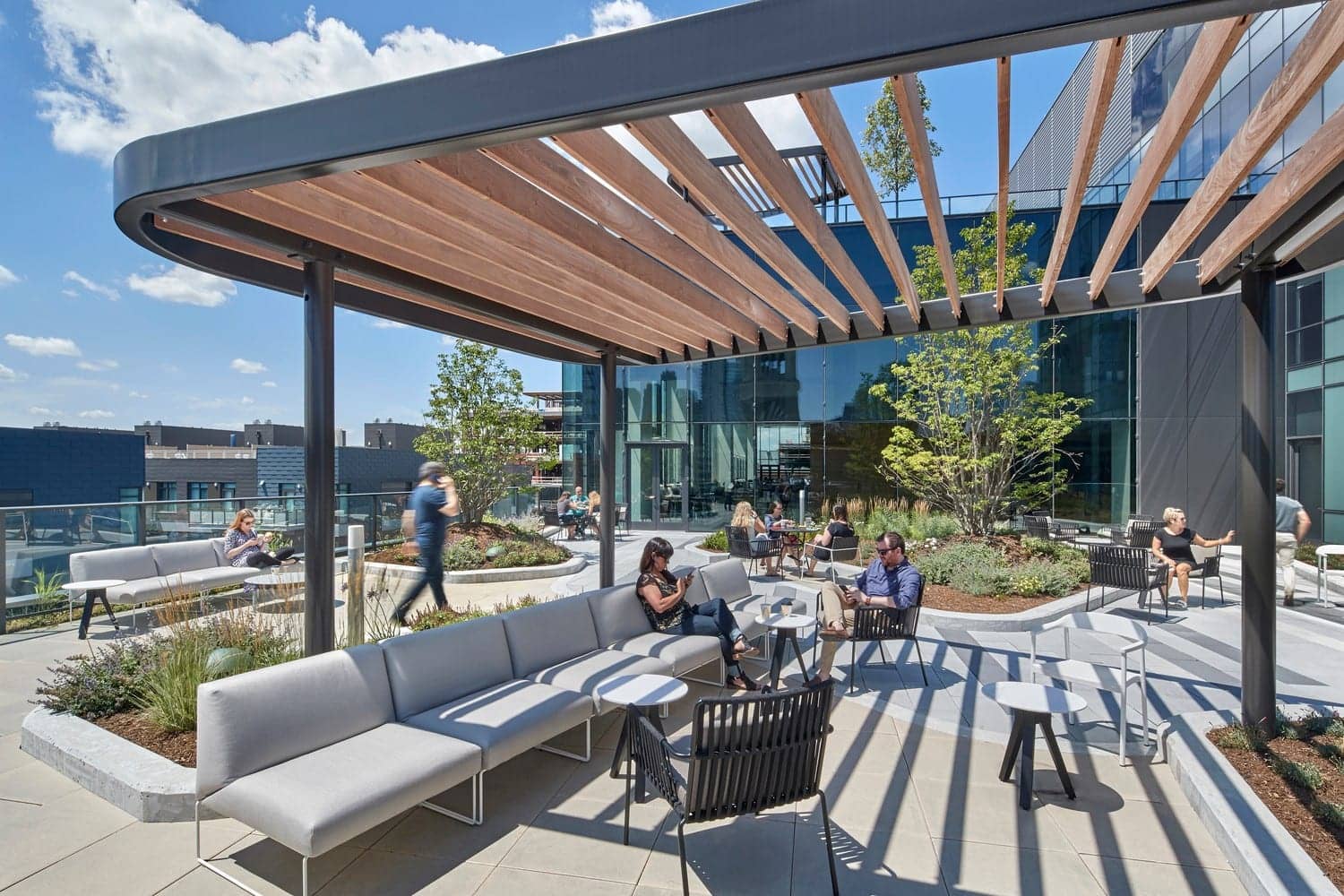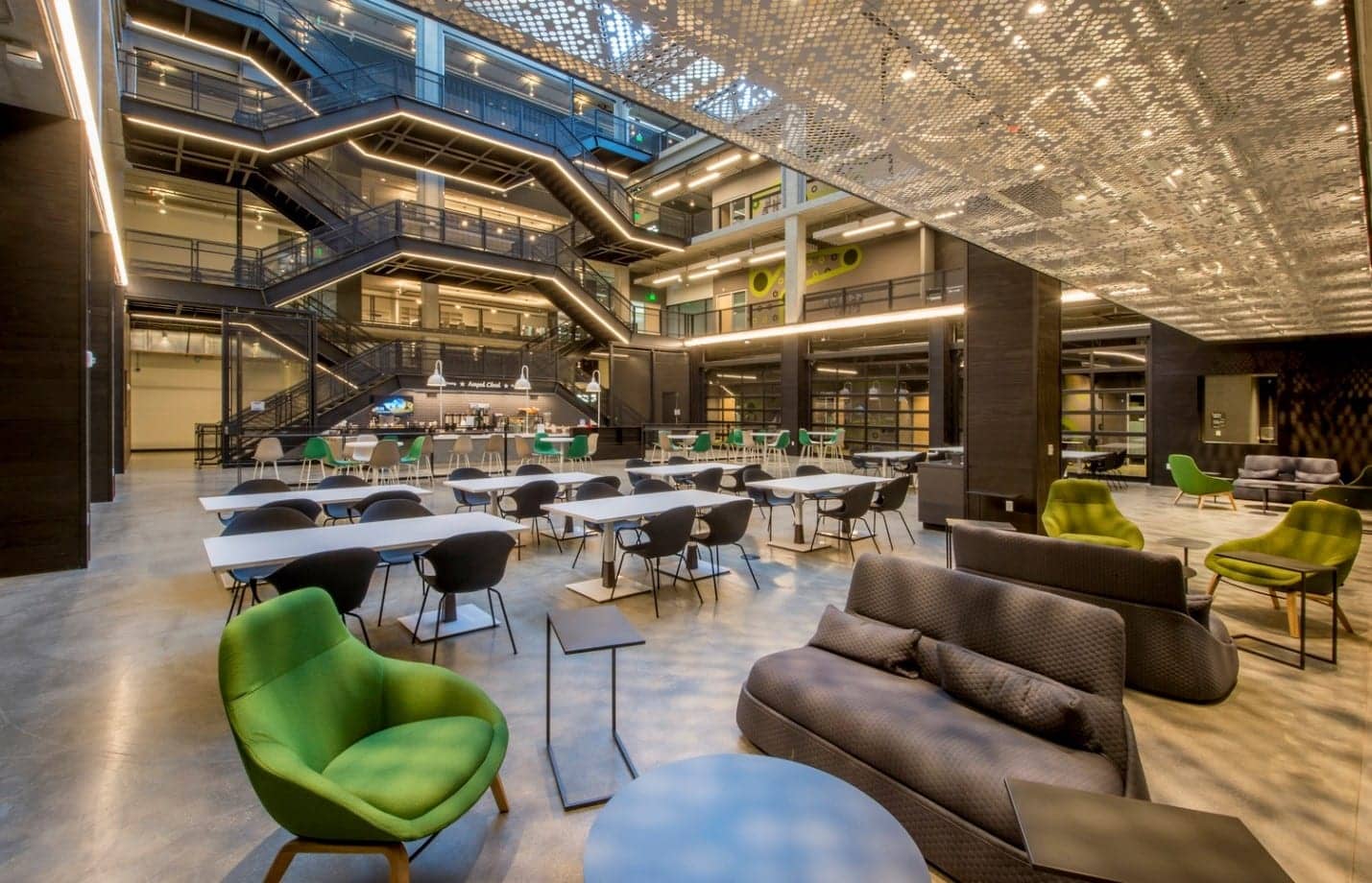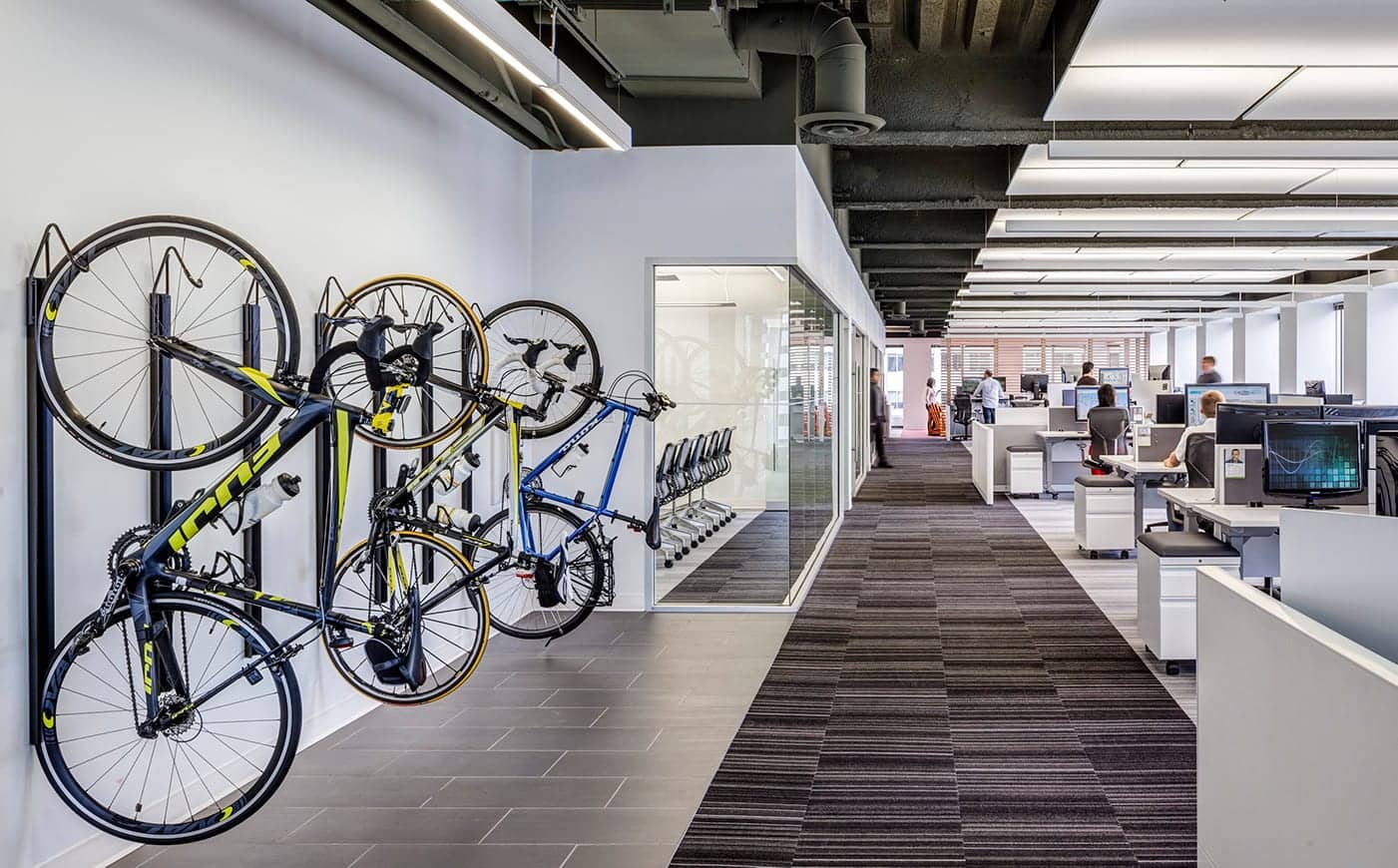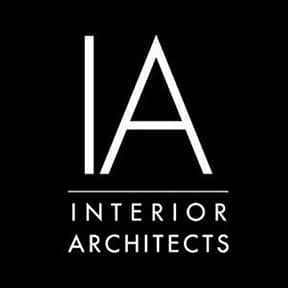
Access to fresh air and outdoor areas are a plus for Fitwel certification. Confidential Client, Chicago. Photography © Garrett Rowland.
A New Certification Program Takes on the Human Experience for Health and Wellbeing In the Built Environment
Creating wellness in the work environment has a new champion – Fitwel. Launched for universal use in 2016, this system, developed by the US Centers for Disease Control and Prevention (CDC) and the General Services Administration (GSA), has joined LEED and WELL in evaluating and rating the health-affecting aspects of the built environment to improve occupant wellbeing—while concomitantly benefiting employee performance, retention, and recruitment. After years of research and beta testing across portions of its portfolio, the GSA sought a third party to administer and implement the rating system for building types and organizations outside the federal government. The Center for Active Design (CfAD) was selected and today administers the Fitwel system in over 35 countries. With staff accounting for approximately 90 percent of business operating costs and each day more than 120 million employees in the US averaging 8.1 hours at work in a building, it is no wonder that the wellbeing of building occupants continues to be a major concern.
How Does Fitwel Work?
The system addresses built environments of every type, from offices to schools to health clinics to residential facilities and is accessed through a carefully-designed and easy to use digital portal. Once registered, using a scorecard developed over 5 years by the CDC, Fitwel rates an environment’s performance across 12 categories and offers 63 design and operational strategies to improve a building’s Fitwel performance. The categories include location; building access; outdoor spaces; entrances and ground floor; stairwells, indoor environments; workspaces; shared space; water supply; cafeterias and prepared food retail; vending machines and snack bars; and emergency procedures. Users can treat the scorecard as a benchmark without seeking certification, or they can shore up their performance and submit evidence-based documentation and images to support certification.
Scorecard objectives are intended to be within reasonable reach of all certification seekers who are committed to creating wellness in any environment. For the most part, the objectives are fairly simple, but taken together they deliver a significant and proven impact, covering a range of criteria from sustainable purchasing policies to onsite gardens, opportunities for fitness, healthy food and beverage standards, commuter access, and the availability of farmers’ market produce, to name a few.

Stairs that are visible and connect relevant floors during business hours contribute to a strong rating. Confidential client, East Palo Alto, CA. Photography @ Craig Gozart.
The Fitwel Certification Process
A double-blind process is used to evaluate each submission and assign a numerical score. For certification 90 to 104 points is required for a single star rating; 105 to 124 points earns two stars; and 125 to a maximum of 144 points garners three. Once a project is registered and the documentation uploaded, Fitwel will issue a report for comments, clarification, and additional requests. The total process and final certification with a star rating can take up to 12 weeks. Neither preconditions nor on-site verification is required, and a certification is good for three years. Like WELL, the program is dynamic; as new research findings are released, they will be incorporated into new versions of Fitwel. Certification not only contributes to ensuring more healthy work environments and emphasizing a concern for employee wellbeing, but when undertaken by building management or a property developer increases the property’s market value.
Fitwel vs. LEED and WELL
While LEED focuses mainly on building infrastructure, both the Fitwel and WELL systems focus on the user experience and facility environment. Although not as rigorous as WELL, which drives a higher level of performance and competitive differentiation through a more complex process at a higher price point (which can be an obstacle for some projects), the Fitwel process is faster, less expensive, accessible, intuitive, and intensely practical. This is good news for clients with extensive portfolios or those who may not have the budget or time for a full WELL certification process but want to create more healthy work environments.
Fitwel fees per project are clear and transparent: $500 for registration with an additional $6,000 for certification, and, unlike WELL, the process is designed to allow building owners, corporate users, or occupants to achieve certification without engaging a consultant. WELL registration fees range from $1,500 to $10,000, depending on the size of the project with additional fees assessed on a per-square-foot basis that range from $0.42 to $0.58. The engagement of a required WELL external consultant factors in an additional cost.

Secure and covered bicycle storage is a scorecard item. Whitepages, Seattle, WA. Photography © Sherman Takata.
Fitwel Ambassadors
The Fitwel Ambassador designation is applied to those who have taken a Fitwel course, passed a required exam, and are knowledgeable in promoting the healthy workplace movement through the application and propagation of Fitwel strategies. With work in progress, IA’s ambassadors are recognized and enthusiastic about the benefits of Fitwel, as well as LEED and WELL, to incentivize clients to pursue wellness programs and achieve measurable results.
“Fitwel is rapidly becoming an essential sustainability program amongst designers, property developers, and portfolio managers. We look forward to sharing and implementing its human-centric approach to the built environment amongst our clients in 2019,” says Senior Designer Robert Atkinson. A Fitwel ambassador at IA’s London office, Atkinson co-chairs IA’s Sustainable Wellness Committee with Senior Strategist and WELL AP Diane Rogers, who is based at IA’s San Francisco location.
Conclusion
One size never fits all, and the choice of a program to create a work environment for wellness and health remains project or portfolio specific. The important factor is to ensure healthy outcomes driven by the work environment for all employees. Different options allow for opportunities to achieve the best solutions for staff and community wellbeing. Using LEED, WELL, or Fitwel, the IA team remains expert and focused on achieving client goals, priorities, and optimum wellbeing, while also being responsible stewards of our planet.
IA is a global firm of architects, designers, strategists, and specialists. We focus exclusively on environments through the lens of interior architecture—a radical idea in 1984, when IA was founded. We are highly connected agents of change, committed to creativity, innovation, growth, and community.
IA is a global firm of architects, designers, strategists, and specialists. We focus exclusively on environments through the lens of interior architecture—a radical idea in 1984, when IA was founded. We are highly connected agents of change, committed to creativity, innovation, growth, and community.

